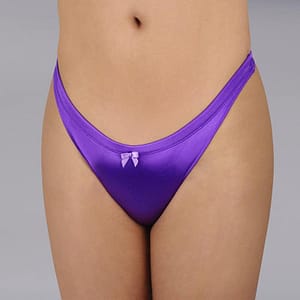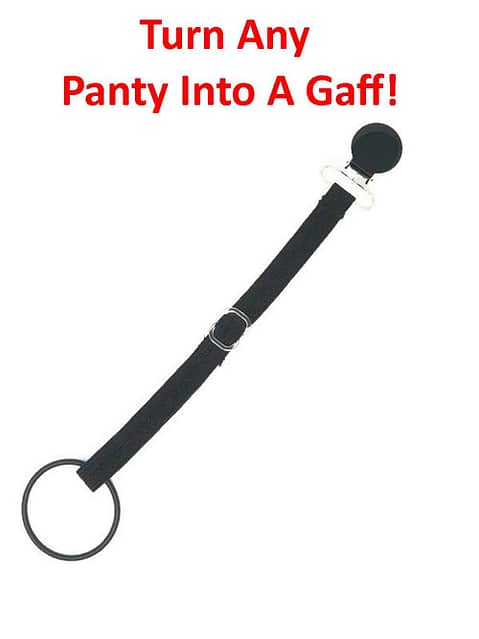- This topic has 3 replies, 2 voices, and was last updated 7 years ago by
 Sheryl Johnstone.
Sheryl Johnstone.
- AuthorPosts
- September 6, 2016 at 12:48 am #30170
 Anonymous
AnonymousA few months ago I was in a group that was posed a challenge; to write an item of fantasy as an exercise of the mind. Now, we’ve has many posts and submitted articles that could be classed as ‘fantasy’ but most would also be classed as erotic fiction’. Some, sadly, were simply base pornography. Anyway, I think I must have been successful in the challenge because I produced the best item. Okay, so to be fair, I produced the only item but, hey, I’ll take credit anywhere I can.
So, for your amusement, entertainment, possible boredom but hopefully at least to raise a smile, I offer:
‘Avoiding Errors of the Past in the Future’
Silver. The light seems to emanate from within the device yet I know that couldn’t be so. Overhead the halogen lights struggle to provide the source of that radiant energy. Despite what I’ve been told this machine will do it looks ridiculously simple. There is an impressive control panel begging my touch. The promise this shiny grail offers is immense yet I hesitate. Can I really do this? Will it actually achieve what my soul yearns for? Can I really touch the past?
I am an historian, employed by the National Government. It can be a rewarding position though at times the political pressures can skew what I believe the work outcome should be. The Government, at least the current one, elected only five years ago and with the second half of its maximum term yet to run, has developed an almost overwhelming fear of repeating errors of the past.
Since public election campaigns were prohibited those seeking public office have had to rely entirely on performance to preserve their positions. The biannual cycle that sees twenty percent of Parliament stand for election or re-election demands that Members perform adequately or face the loss of their privileged positions. Should their individual performances not measure up to public expectations then they quickly find themselves Absque Negotium, a person without occupation, and thus prohibited from holding executive positions in any company, business or organisation for what would have been the duration of their ten-year term. They simply become a member of the same society they formerly let down.
My job is thus to provide advice to Government on the failings in policy of previous Senior Executives and the Government they led. Policy that was well received by society and which produced effective results, are held up as examples of how things should be done. Those that resulted in large numbers of Government members being dismissed in any election cycle, or worse, resulted in Executive power being surrendered, were examined in minute detail. Policy flaws are dissected and reworked. Mistakes which, fifty years ago, might only have resulted in a poor election performance, now have the potential to reshape the whole Government balance. Poor history cannot be allowed to repeat itself.
One such policy error occurred just prior to the last election cycle when the Government sought to redefine “public attire”. Militants within some elements of society were championing the case of at least modifying, if not eliminating, the public attire legislation. For at least eighty years society has had the standards of public attire defined and laid down in law. It is a fair and equitable system. Appropriate clothing is provided to all citizens at no cost to them. To preserve equity all attire is, of course, standardised and functional. Variants of ‘special purpose attire’ naturally apply to specific occupations but, as is appropriate to an enlightened society, no other variations are allowed.
The militants agitating for change have suggested that attire, which they insist on calling ‘”clothing” to separate it from Government-issued attire, shouldn’t be a common product but instead should be modified or even varied to suit the individual’s desires. Although they have not explained how any one citizen can justify a ‘desire’ that doesn’t meet approved standards they nevertheless advocate that those citizens have a right to express themselves as they choose. That such attitudes would result in nothing short of anarchy if they became widespread is ignored by the militants. Even bolder, or more foolish, was the proposal that said alternative “clothing” should even vary to separate those in the three Breeding Classes.
When I was tasked by the relevant Minister to establish if there had ever been an historical situation where the three Breeding Classes had been attired differently to each other I was unaware of what my research would uncover. I have the National Data Archive at my disposal so access to the relevant information should not have been a challenge. My first step was to go back one hundred years and establish what the civil attire was then. I expected that there would be many different variants simply because it was a time pre-standardisation but the variations all seemed to be based on occupation. There still appeared to be no specific separation of the Breeding Classes so I had to go back further.
That was when the first of my shocking discoveries occurred. My first impression was that the data was somehow flawed. In the early 21st century data acquisition and storage seemed to be a mixture of public and Executive responsibility. Executive data storage from the period was such that much of it has been recovered through painstaking work by Forensic Data Recovery (FDR) staff. As the storage mediums of the time all seem to have been mechanical and electrical, rather than the more efficient biological storage we use, recovery of Executive data, whilst slow, is still feasible. Recovery of public data, which mostly seems to have been stored on a range of individual devices, is much harder to access. Some, stored on something referred to as a ‘cloud’, was thankfully (in scientific/historical terms, of course) duplicated and managed separately by the companies that controlled that technology and was among the data passed to and stored by the Executive.
When I began to evaluate what I could extract from early 21st century data I felt that the FDR officers had corrupted the product. I could find no reference to Breeding Classes. There was much about breeding, including some ridiculous concept that breeding processes could be viewed as entertainment, but the citizens did not appear to be divided into relevant Class A, Class B or Class C.
After further research I made a breakthrough. I was able to establish, with a degree of certainty, that it was some time near the middle of the 21st century that Breeding Classes were specifically designated. Prior to that, for reasons that I can only see were based purely on anatomy, citizens were classified by a concept called ‘gender’. Whilst it didn’t take me long to establish that the majority of Class A Breeders were previously designated as “female” and Class B Breeders were “male” there were also Class C Breeders who were from the female and male ‘genders’. As I said, this seems to have been based purely on anatomy and not Breeding status. Public attire was structured, but in no way defined, other than by a yet-to-be identified authority called “Fashion”, around these two ‘genders’.
Initially I thought I’d found the answer when I came across a reference to an apparent third gender. These citizens were referred to as “transgender”; those who refused to accept their anatomical designation and instead chose to cross (hence ‘trans’) from being a female to being a male, or from being a male to being a female. As our citizens now do, I thought that once a ‘female’ or a ‘male’ was no longer able to breed they’d naturally be redefined as Class C Breeders but this “transgender” group didn’t exactly fit that concept. From what I could see, this redefinition as ‘transgender’ was voluntary and was not by Executive Decree. There was no sterilisation process to confirm Class C status. Instead, some ‘transgender’ citizens apparently defined their own ‘gender’ only by wearing the attire designated for either ‘female’ or ‘male’ as they chose. Others of these citizens actually undertook a primitive form of body correction through a process called “surgery”, in which body parts are removed or altered by traumatic interference, after which natural healing is required. There were certainly no tissue regenerators in those days. By this process these citizens also became Class C Breeders though curiously they were no longer defined as ‘transgender’ but rather as ‘male’ or ‘female’, the opposite of their previous anatomical designation.
Within all that research I discovered that public attire previously had no Executive designation. For an obscure reason not stated, ‘females’ and ‘males’ were expected to wear completely different attire. There was no standardisation. Why this difference was based on anatomy I have not been able to establish. Out of curiosity, surely a good trait for an historian, I endeavoured to access data pertaining to the 19th and 18th centuries. This has only caused more confusion for me because attire seemingly required by females of the early 21st century was very similar to that required by 18th and early 19th century males, including excessive artificial hair.
The call from militants today to alter the public attire requirements has the potential to reintroduce the anarchy and lawlessness that was the hallmark of the early 21st century. It is difficult to comprehend why citizens would voluntarily seek to segregate themselves based on their Breeding Class. To do so based purely on anatomy is even more irresponsible. The militants must be silenced but they must be silenced by public opinion and that can only come from education.
My Report to Executive has been considered by the Government and that is why I now find myself here in this room. Since its discovery, time travel has been strictly controlled and regulated. I have been ordered though, to travel back to 2015, a time chosen, mostly based on public media announcements, to have been significant in terms of citizens’ public attire, to gain all relevant data that will help the Government to establish the correct course of action. From my research I’ve been able to establish that my standard Pattern S (Summer) tunic closely resembles that of a 21st century female attire called a dress so I will present myself as a ‘female’. With the knowledge I’ve gained I doubt I’ll have trouble being accepted as a female of the period. However, I am looking forward to establishing the cause of the facial colour enhancement females of the time had. I suspect it to be an external application of topical substances but I shall hold speculation for now, as I must contain my excitement at the adventure I am undertaking.
Once my two week mission is complete I will tender my Subsequent Report to Executive. I firmly believe that I will be able to prove the folly of “free choice”, Breeding Class (or ‘gender’)-based public attire. Such matters should never be the responsibility of individual citizens.
- January 20, 2017 at 3:45 pm #42370
 Anonymous
AnonymousThere is a follow-up article but I think you’ve all endured enough pain 😉
- February 8, 2017 at 10:42 pm #43917
 Anonymous
AnonymousHard to believe, but it’s true.
- February 9, 2017 at 12:51 am #43918
As usual Jane, your prediction of disinterest in your writings is totally unfounded. I found it to be a brilliant piece of work and will eagerly await the publication of the follow up article.
- AuthorPosts
- The forum ‘Poet’s Corner’ is closed to new topics and replies.














Recent Comments